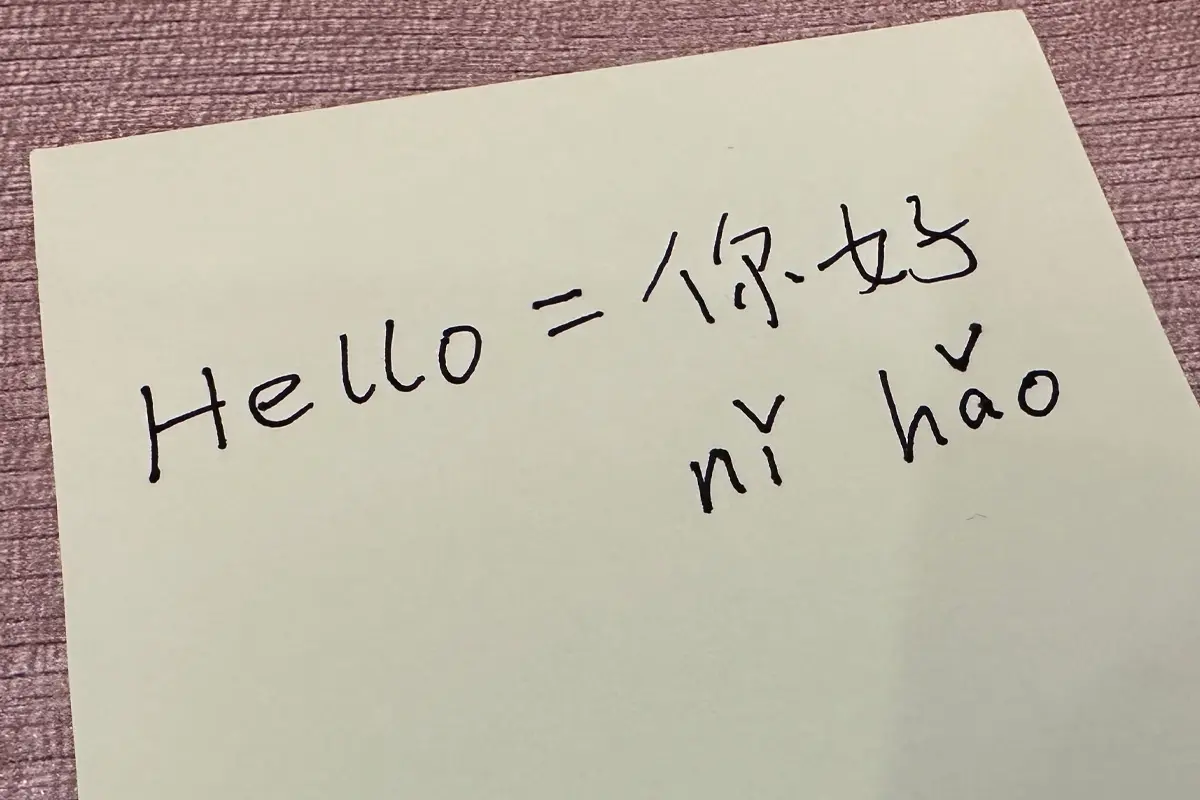
Pinyin is the gateway to speaking Chinese with confidence.
What Is Pinyin?
Pinyin is the Romanization system used to represent the sounds of Mandarin Chinese using the Latin alphabet. It was introduced in the 1950s and is now the official phonetic system in Mainland China.
If you’ve ever typed Chinese on a keyboard or tried to pronounce Mandarin words as a beginner, chances are you’ve already encountered Pinyin.
Why Pinyin Matters for Mandarin Learners
Pinyin is more than just a pronunciation aid. It’s the essential starting point for learners because:
- It helps you pronounce Chinese words correctly
- It allows you to type Chinese using a Latin keyboard
- It builds a strong foundation for learning tones and characters
Trying to learn Mandarin without mastering Pinyin is like trying to read music without knowing the notes.
Breaking Down Pinyin: Initials, Finals, and Tones
A Pinyin syllable usually consists of:
- Initial (consonant sound) – the beginning sound
- Final (vowel or vowel combination) – the ending sound
- Tone mark – the pitch used to pronounce it
🧩 Initials in Pinyin (21 total)
These are the Pinyin Initials sounds that can Sounds that appear at the beginning of a syllable:
Note: Some sounds like
zh,ch, andshare retroflex (curled tongue), whilej,q, andxare pronounced with a flat tongue and only appear beforeiorüfinals.
🧩 Finals in Pinyin (35+ common finals)
Finals are the vowel or vowel-combination parts that follow initials. These can be simple, compound, or nasal.
Simple Finals
Compound Finals
Nasal Finals
Some finals will also appear as glide combinations when there’s no initial consonant:
ya,yo,ye,yao,you,yan,yin,yang,ying,yongwa,wo,wai,wei,wan,wen,wang,wengyu,yue,yuan,yun(with the ü sound aftery)
🎵 Tones in Pinyin
Mandarin Chinese uses four tones to distinguish word meanings, plus a neutral tone.
- First tone (flat and high): mā → high and level
- Second tone (rising): má → like you’re asking a question
- Third tone (falling then rising): mǎ → dip in pitch then rise
- Fourth tone (falling and sharp): mà → strong and falling
- Neutral tone: ma → soft, unstressed
check Pinyin Tone Marks Explained: A Clear Guide for Beginners
Full interactive Pinyin Chart Table — All Initials × Finals with Four Tunes
📌 Example Breakdown
Pinyin: māo
Meaning: cat
Breakdown:
- Initial:
m - Final:
ao - Tone: First tone (
māo) → high and level
Even though “māo” is just one syllable, understanding its structure helps build pronunciation and listening skills faster.
Common Mistakes to Avoid
Here are a few beginner errors you’ll want to dodge:
- Ignoring tones – Saying words with the wrong tone can completely change their meaning.
- Over-relying on English sounds – Pinyin letters don’t always match English equivalents. For example,
qin Pinyin sounds like “ch” in English, andxsounds like “sh” but lighter. - Forgetting the neutral tone – It’s subtle but important in natural speech.
Pinyin vs. Characters: When to Transition?
While characters are the backbone of written Chinese, don’t rush into memorizing them before you’re solid with Pinyin.
Build pronunciation confidence first, then layer characters on top.
Once you can hear, say, and type a word confidently in Pinyin, you’re in a better position to associate it with its Chinese character.
Typing in Chinese Using Pinyin
Most Mandarin speakers type Chinese characters using Pinyin on digital devices.
Here’s how it works:
- You type the word in Pinyin, e.g.,
xiexie - A dropdown shows character suggestions
- You select the correct one:
谢谢(“thank you”)
Learning Pinyin actually helps you use tech more efficiently in Chinese.
Practice Tips for Better Pinyin
Here are some daily habits to level up your pronunciation:
- Record yourself: Compare your tone and pronunciation with a native speaker.
- Use minimal pairs: Practice similar-sounding syllables like
zhvs ch, or jvs q. - Drill tricky finals: Focus on endings like
-iang, -üe, or -engthat don’t exist in English.
Want to Practice Right Now?
Here are two free online tools that help you drill Pinyin and build character recognition with ease:
- Pinyin Character Table: Practice every combination of initials and finals with audio support.
- Chinese Radical Explorer: Get familiar with the building blocks of Chinese characters.
Perfect for beginners and curious learners alike.
Conclusion: Your First Step to Learning Chinese
If you’re learning Mandarin, Pinyin is your first real foothold. It doesn’t matter if you’re using apps, tutors, or flashcards—Pinyin is what makes the language speakable and typeable.
So don’t skip it, don’t rush it. Treat Pinyin like a map—it shows you where to go and how to say it when you get there.
The journey of a thousand characters begins with one sound. That sound is Pinyin. And if you’re looking for even more resources to deepen your journey, we recommend exploring this comprehensive guide to learning Mandarin by our friends at All Language Resources—especially useful for beginners.